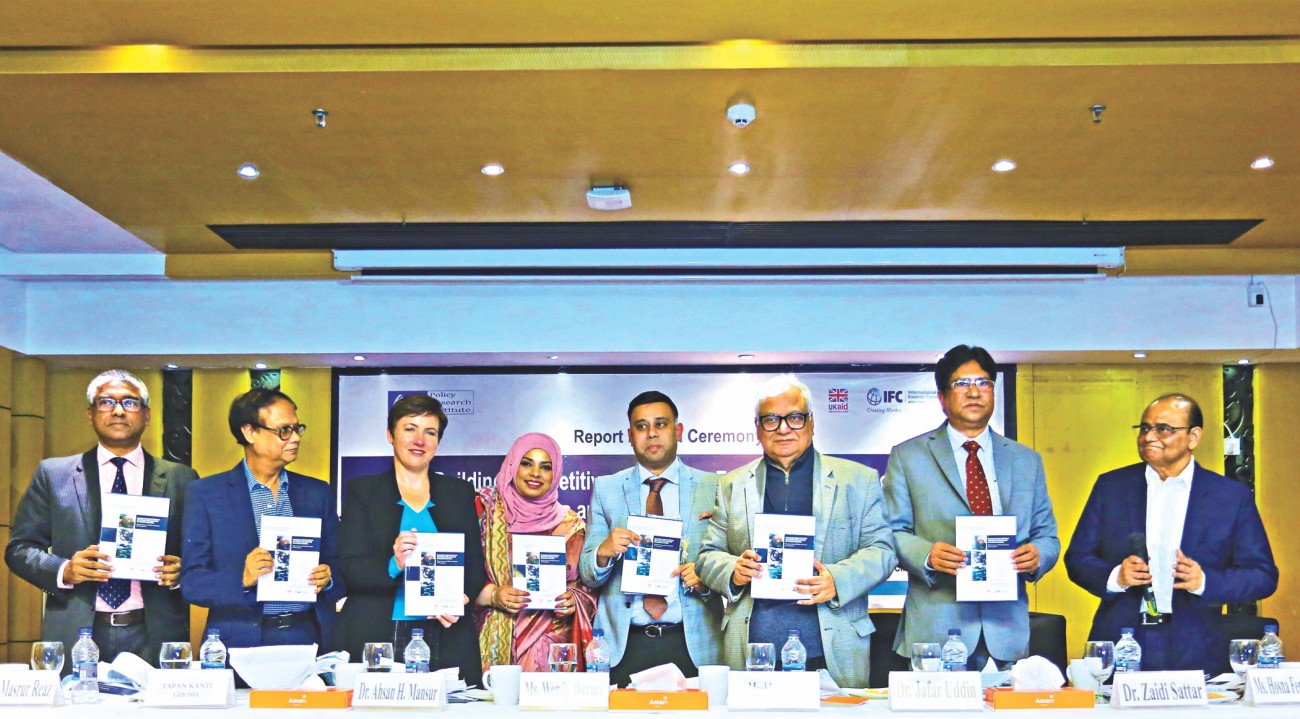Tannery estate needs quick upgrade for better leather prices

The government should facilitate quick installation of the central effluent treatment plant at the Savar Tannery Industrial Estate to ensure better prices for Bangladeshi leather and leather goods, a top exporter said yesterday.
Local leather and leather goods exporters receive nearly 40 percent lower prices than their foreign peers, as they do not have the Leather Working Group (LWG) certification, a vital accreditation needed to receive fair prices from buyers.
Only three local leather and leather goods companies have the certification at the moment and they are helping the sector grow gradually.
“If all the 155 tanneries, housed at the leather industrial park in Savar, can obtain the certification, they will be able to receive proper prices from international buyers,” said Saiful Islam, president of the Leathergoods and Footwear Manufacturers and Exporters Association of Bangladesh.
He spoke at the launch of a report styled “Building Competitive Sectors for Export Diversification: Opportunities and Policy Priorities for Bangladesh”, published by the International Finance Corporation (IFC), the private sector lending arm of the World Bank Group.
The event took place at the Amari Hotel in Dhaka.
The CETP is not fully functional yet to get the LWG certification. As a result, local leather and leather goods manufacturers have to sell goods to some limited non-compliant Chinese manufacturers at cheaper rates.
“So, the target to export $5 billion worth of leather and leather goods by 2021 might not be possible,” Islam said.
Currently, the sector is the second largest foreign currency earner after ready-made garment. It fetched $1.02 billion in exports in the last fiscal year.
“We must do something for value-addition. Bangladesh has comparative advantage as the leather and leather goods sector has its own raw materials,” Islam said.
Bangladesh’s competitors such as Vietnam, Indonesia and Cambodia have the advantages of diversified products, the entrepreneur added.
Islam called for special allocation for product and market diversification and innovation, as the private sector has hardly had any innovation recently because of higher cost of funds. Cement, steel and pharmaceutical exports should be boosted to diversify the export basket because they have the capability to earn a lot if facilitated properly, said MA Razzaque, research director at the Policy Research Institute of Bangladesh (PRI).
Higher demand for some goods in the local market can also draw higher investment and higher export, he said.
For instance, per capita consumption of plastics in Bangladesh is five kg against the Asian average of 36kg. Domestic demand can help expand the market and ultimately boost exports, Razzaque also said.
Some $600 million worth of plastic goods are exported from Bangladesh every year mainly as dimmed export items like hanger. Plastics has good potential at both home and abroad, he said.
To the researcher, it does not make any sense why the government does not allow bonded warehouse facility to the companies that manufacture products both for local and international markets.
“This is really a challenge for some sectors,” he added.
The government is working to develop particular products in the areas of leather and leather goods, plastic, footwear and light engineering under a special scheme so that the goods can be exported in the near future, Commerce Secretary Mohammad Jafar Uddin said.
As part of an initiative to diversify markets, Bangladesh is trying to grab more market shares in Latin American countries like Brazil, Mexico and Argentina.
Moreover, Bangladesh has targeted the central Asian countries for market diversification, apart from traditional markets, namely the EU, the US and Canada, he said.
“However, Bangladesh will need to diversify skills along with market and product diversification,” he said.
A diversified export portfolio comprising competitive sectors, such as leather and footwear, plastics, and light engineering, will help create greater access to international markets for Bangladeshi products, the report said.
It recommended policymakers develop strategies in order to integrate priority sectors with the global value chain.
“To sustain its growth trajectory and reduce overdependence on any single item, Bangladesh needs to build a strong manufacturing ecosystem and develop new products, while paving the way for large scale job creation and poverty reduction,” said Wendy Werner, country manager of the IFC for Bangladesh, Bhutan and Nepal.
The IFC publication compared Bangladesh’s export performance with several comparator countries, including Vietnam, Cambodia, Malaysia, China and India, to identify areas for the country to improve.
Economic factors such as employment generation, women’s employment, growth of small and medium enterprises, and foreign direct investment are needed in seven potential sectors for export diversification, it said.
“Bangladesh’s economy is moving forward at a stable pace,” said Mashiur Rahman, adviser to the prime minister on economic affairs.
The government has initiated a concerted effort to diversify exports, he said.
